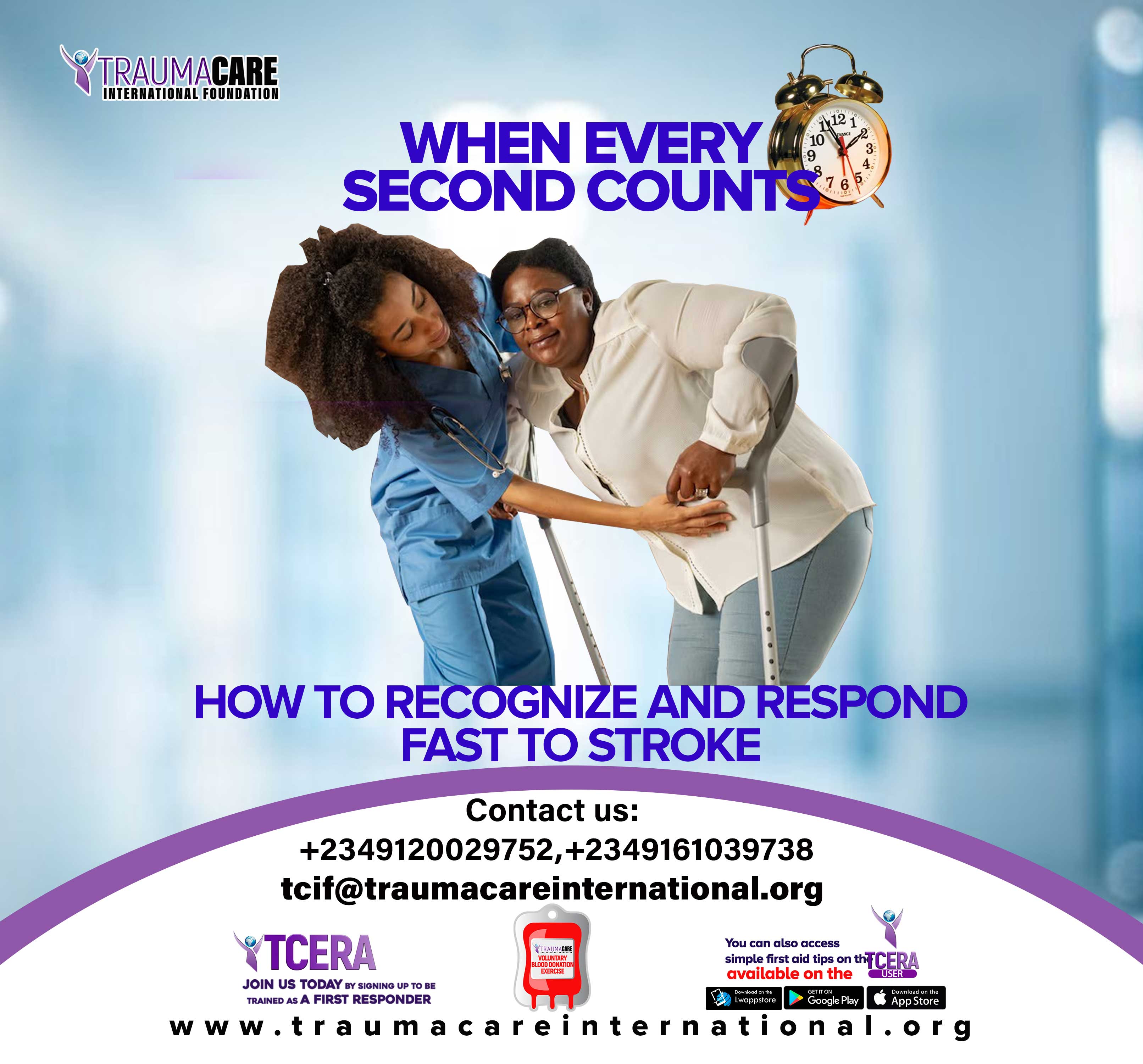A stroke is a medical emergency that occurs when blood flow to the brain is interrupted, either due to a blockage (ischemic stroke) or a burst blood vessel (hemorrhagic stroke). Without a steady supply of oxygen and nutrients, brain cells die within minutes, making rapid intervention critical. Recognizing the signs of a stroke and taking immediate action can mean the difference between life, disability, or death.
Understanding Stroke Symptoms
The most effective way to identify a stroke is by using the F.A.S.T. method:
- F – Face Drooping: One side of the face may suddenly become numb or droop. If you suspect a stroke, ask the person to smile and check for unevenness.
- A – Arm Weakness: One arm may feel weak or numb. Ask the person to raise both arms and see if one drifts downward.
- S – Speech Difficulty: Speech may become slurred, incoherent, or difficult to understand. Ask the person to repeat a simple sentence.
- T – Time to Call your country or state emergency number: If any of these symptoms are present, seek emergency medical assistance immediately.
In addition to the F.A.S.T. symptoms, other warning signs of stroke can include sudden confusion, difficulty understanding speech, trouble seeing in one or both eyes, dizziness, loss of balance, or an unexplained severe headache.
Acting Fast: Why Immediate Response Matters
Time is the most crucial factor in stroke treatment. The sooner medical treatment is received, the greater the chances of survival and recovery. Emergency treatments such as clot-busting medications (for ischemic strokes) or surgery (for hemorrhagic strokes) are most effective within the first few hours of symptom onset.
A delay in treatment increases the risk of severe brain damage and long-term disability. Every minute a stroke goes untreated, an estimated 1.9 million brain cells die. This can lead to paralysis, speech impairment, memory loss, and other significant health challenges
What to Do in a Stroke Emergency
- Call your country or state emergency number Immediately: Do not wait to see if symptoms dissapear. Inform emergency responders that you suspect a stroke.
- Note the Time: Knowing when symptoms first appeared helps doctors determine treatment options.
- Keep the Person Calm and Still: Encourage them to remain seated or lying down and avoid eating or drinking.
- Monitor Breathing and Consciousness: If the person becomes unconscious, check for breathing and perform CPR if necessary.
- Do Not Give Medication: Avoid giving aspirin or other drugs unless directed by a doctor, as some strokes are caused by bleeding rather than clots.
Stroke Prevention: Lowering the Risk
While strokes can happen unexpectedly, several lifestyle changes can reduce the risk:
- Manage Blood Pressure: High blood pressure is a leading cause of strokes. Regular monitoring and medication, if necessary, can help control it.
- Maintain a Healthy Diet: Eating a diet rich in fruits, vegetables, whole grains, and lean proteins can support vascular health.
- Exercise Regularly: Engaging in moderate physical activity for at least 30 minutes most days of the week can improve circulation and reduce stroke risk.
- Control Diabetes and Cholesterol: Managing these conditions through diet, exercise, and medication helps prevent stroke.
- Avoid Smoking and Excessive Alcohol Use: Smoking damages blood vessels, and excessive alcohol consumption can raise blood pressure, increasing stroke risk.
Conclusion
A stroke is a life-threatening emergency that demands immediate attention. Recognizing the signs, acting quickly, and seeking medical assistance without delay can save lives and improve recovery outcomes. By spreading awareness and adopting a healthy lifestyle, individuals can significantly reduce the risk of stroke and its devastating consequences. Every second counts—act fast and be prepared to help when it matters most.





What do you think?
0 Responses
To Comment, you must Sign In
Be the First to Post on this Topic